What Is SWOLF and How Can It Make Me A Better Swimmer?
 Karen Parnell
November 05, 2022
Karen Parnell
November 05, 2022
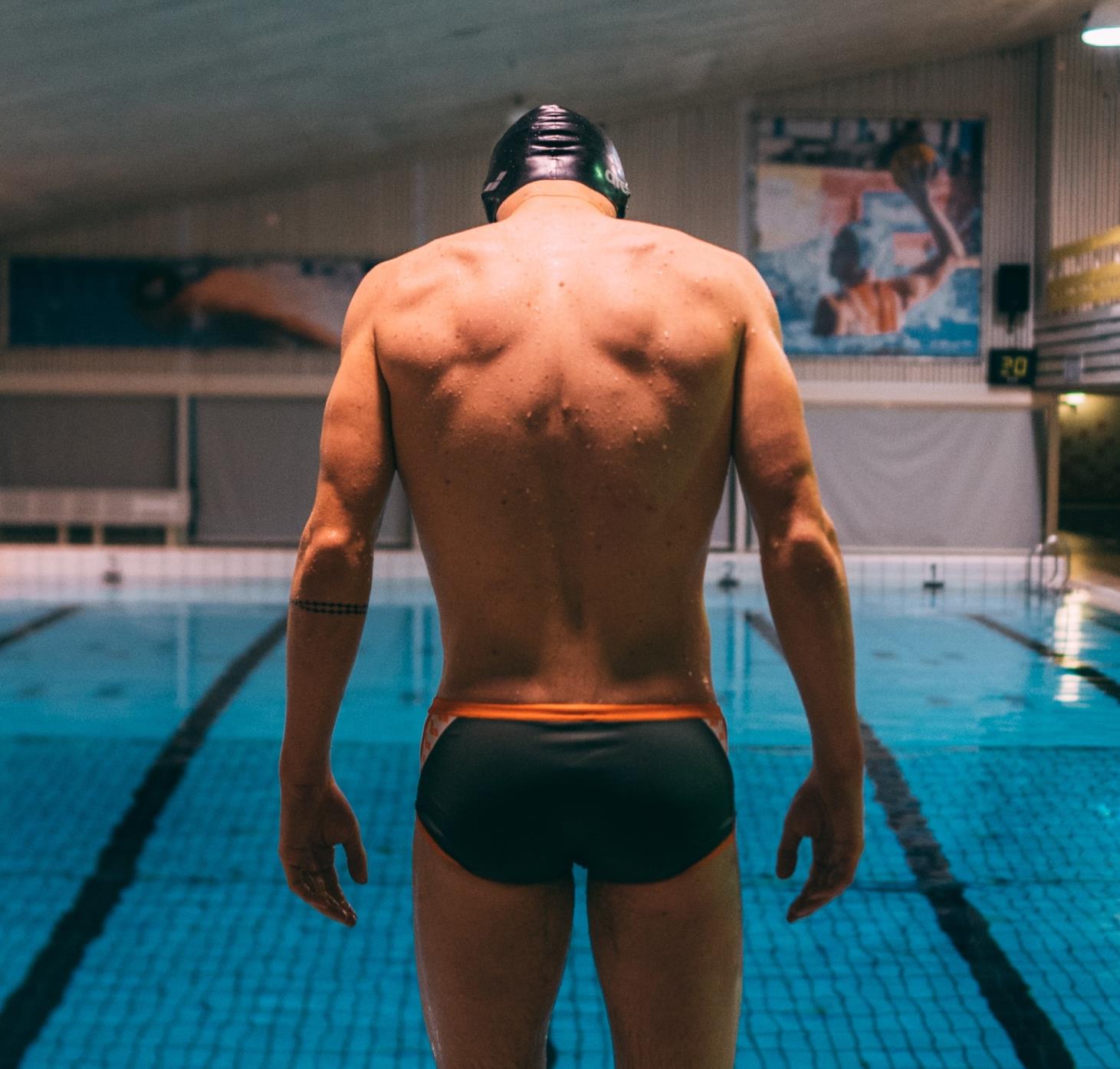
What Is SWOLF and How Can It Make Me A Better Swimmer?
You may have heard swimmers talk about their SWOLF score but what is it and is it useful for swimmers?
SWOLF is a mash up of Swimming and Golf. If you are a golfer this may appeal to you as it’s a bit like your golf handicap and like a gold handicap your aim is to reduce it.
SWOLF can be used as a Front Crawl or Freestyle swim efficiency metric, and it can be thought of like Speed/Effort or your stroke efficiency.
SWOLF is a combination of your Stroke Rate and the time you spend in the water to cover 25 metres or yards or Stroke Distance and is commonly used as a measurement of your swim efficiency.
SWOLF is better than just counting strokes, as you can reduce strokes taken by sliding through the water more efficiently.
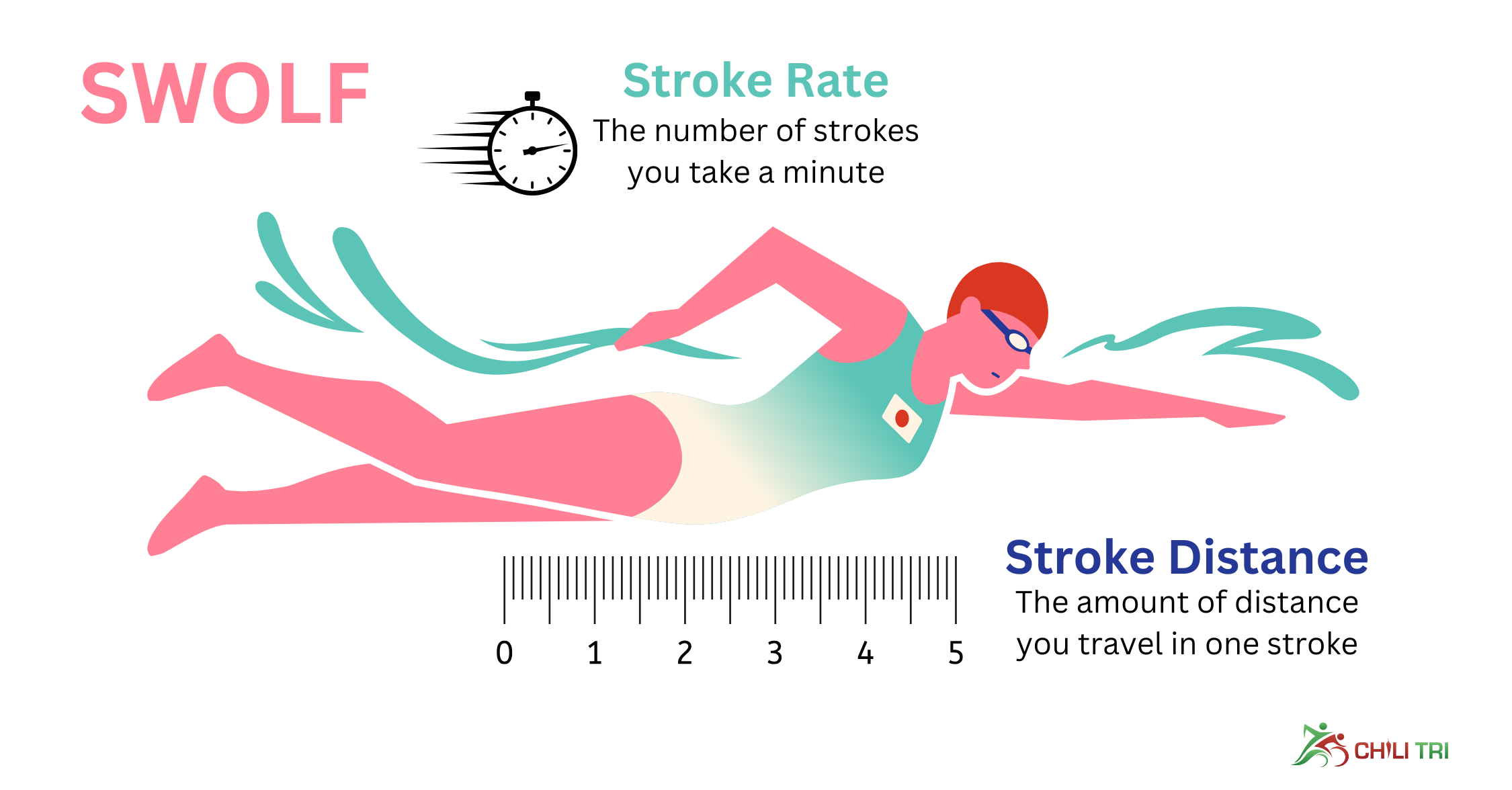
When starting out with SWOLF, strive to reduce the number of strokes you take to finish one length (or two) by keeping the same pace. The trick is however not to over-glide and add a “dead spot” into your stroke where you are not propelling yourself forward through the water.
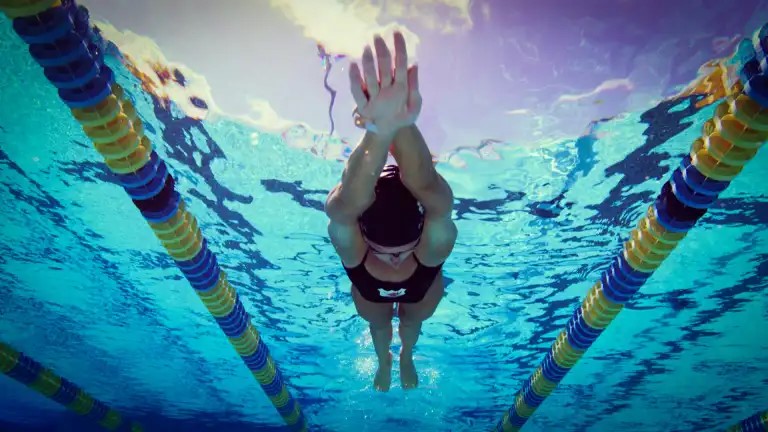
Get your FREE swimming workouts for triathletes book.
What is SWOLF in swimming?
Your SWOLF is easy to calculate – you simply need to add together the number of strokes you take to swim a 25 metre or yard length of the pool with the time in seconds it takes you.
For example, if you take 18 strokes (counting both arms) and it takes 29 seconds to swim a length, then your SWOLF score is 47.
You can do this yourself using a basic stopwatch or pool clock and counting your strokes or ask swim buddy or coach to do it for you poolside.
Many smart sports watches will do it for you though and I use my COROS Pace 3 to calculate my SWOLF.
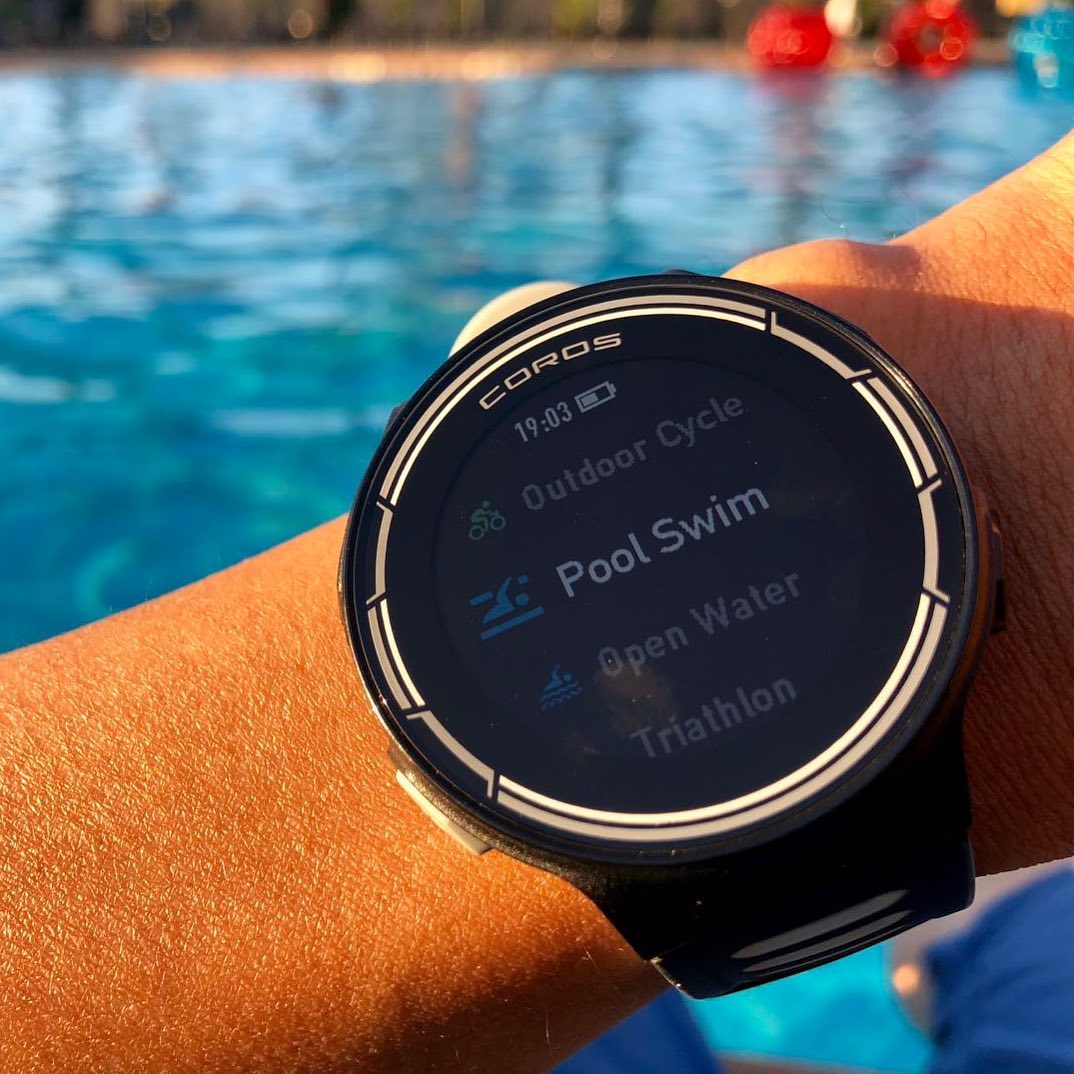
COROS Watch - Ideal for tracking your swimming.
Get your FREE Open Water Swimming Workouts E-Book
What is a good SWOLF score?
All swimmers have a sweet spot which combines the least effort with the most speed for maximum efficiency and that’s the goal with SWOLF.
As a guide, a SWOLF score of between 35 and 45 over 25m is very good, or over 50m scoring in the low-70s is excellent.
But your SWOLF score is personal to you and the first time you do the test you can use this as your base rate and strive to lower your score over time.

Get your FREE 8-Week Sprint Triathlon Swimming Training Plan
How can I improve my swimming SWOLF score?
There are two sides of this coin, it is either you try to drop your stroke count, meaning that your SWOLF score will go down, or that you attempt to swim faster at the same stroke rate, meaning your SWOLF score is going down as well.
If you increase your stroke rate, you will probably take in more strokes per length so you score may in fact go up if you shorten your stroke and become less efficient.
Or you may try to produce more force in the water and become faster so lowering your time to complete 25m and reduce your stroke rate at the same time. But if you simply reduce your stroke rate and glide at the end of each stroke you will reduce your stroke rate but increase your time to cover 25m and may see your SWOLF score increase.
Each individual swimmer has a specific stroke rate/stroke length combination that is the most effective at producing speed, and SWOLF is a helpful drill for to help you find your unique combination.
Using your base starting score, play around with tweaking your swimming and working on technique improvements.
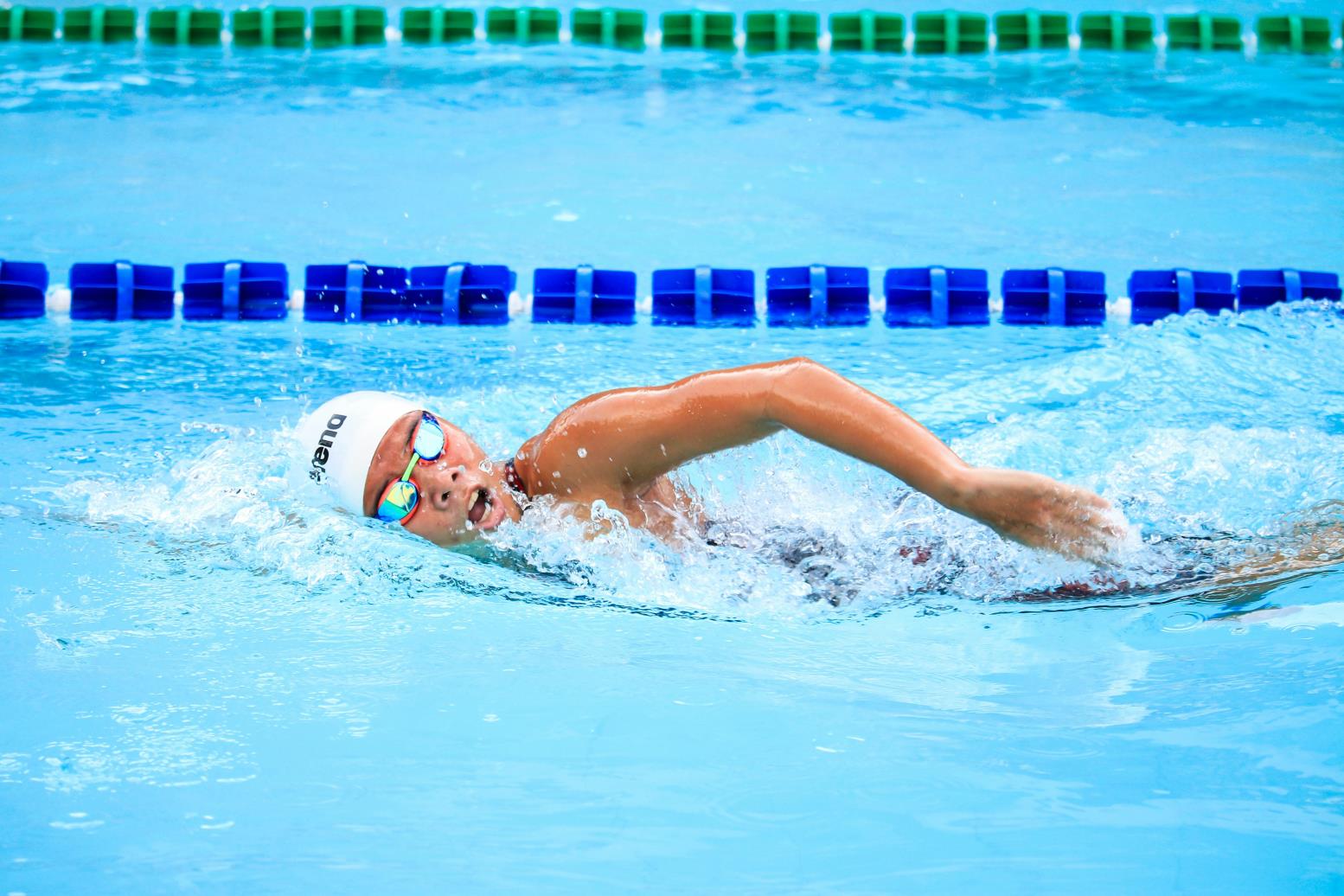
Get your FREE Open Water Swimming Workouts E-Book
For example, can you slow down your stroke rate and work more on extending your reach with no glide or dead spot, rotating your body, and then pulling more strongly. Good drills to improve your pull are the sculling drill and fist drill. To aid with rotation try the 6-1-6 drill. When you try this how did it work for you? Did you feel more relaxed and able to breath out in a more controlled fashion? What happened to your SWOLF score?
The Sculling Drill with help woith your SWOLF Score: Find out how to do it with GTN
Get your FREE 8-Week Sprint Triathlon Swimming Training Plan
However, if you already have a slow stroke rate you could try increasing your stroke rate a little. Try this and see what happens? Did your swim time increase? Did your SWOLF score go up and down.
You could also try swimming a length with a pull buoy and then the next with paddles. What happened to your time and stroke rate and therefore your SWOLF score. If you improved with paddles, then having stronger catch and pull phases will help you. If your SWOLF improved using a pull buoy, then maybe your body position is holding you back or your kick needs work e.g., toes not pointed and not initiating the kick from your hips.
Like with a handicap in golf, the aim is to bring your score down. The lower your SWOLF score the better and the faster you are swimming but with less effort.
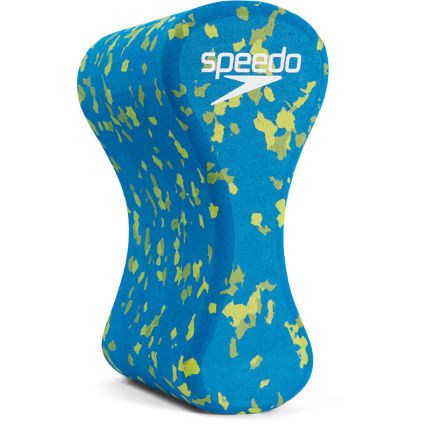
Get your FREE swimming workouts for triathletes book.
Read about how to select the right pull buoy for you.
Using a Finis Temp Trainer to improve your SWOLF score
The Finis Tempo trainer is a device that beeps depending on the setting you use it in. It used to be called a Wetronome! A water metronome. You can use it to increase your stroke rate using mode 3. A good place to start is 60 and see how the feels by taking a stroke on every beep. If it’s too fast take the number down and too slow take it up until you find your stroke rate. From there you can aim to increase the beep by one every week to start to increase your stroke rate.
As you increase your stroke rate remember to keep see what your SWOLF score is – if it’s going up you may be increasing your stroke rate but reducing your efficiency!
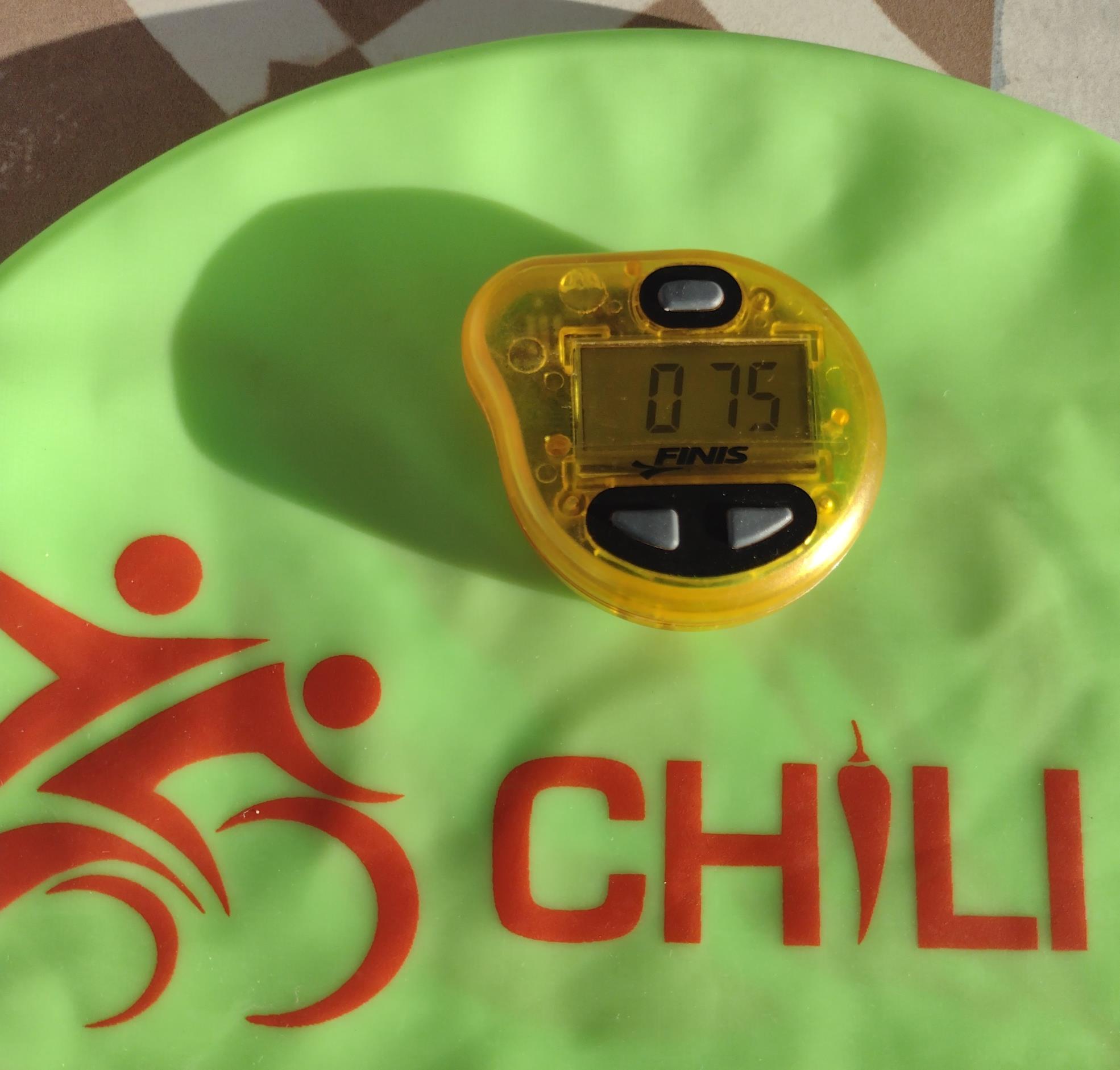
Finis Tempo Trainer Pro or Wetronome
Get your FREE 8-Week Sprint Triathlon Swimming Training Plan
Conclusion: Swimming SWOLF to Improve you Swimming Efficieincy
SWOLF is a rating that combines the strokes taken and time taken to complete one 25m lap of your swimming pool.
The SWOLF score is the combination your 25 metre or yard swim time and the number of strokes you took. Your SWOLF score takes two critical numbers - one relating to how fast you are swimming, and one measuring how efficient you are swimming - to provide a single, comprehensive number that does an excellent job at reflecting how great a swimmer you are.
It is the foundational swim metric, and once you start understanding stroke rate, you will understand how to increase swim efficiency and swim faster with less effort.
You SWOLF score is personal to you but the ultimate aim is to bring the score down over time using the techniques detailed above. Also remember your ultimate swimming goal which may be a 750m sprint triathlon which may need a higher stroke rate, or it may be a 3800m IRONMAN swim which may need a slower stroke rate and more extension.
Would you like a FREE swimming workouts for triathletes e-book with tips, workouts, drills and more – download it here.
Swimming training plans on TrainingPeaks.
Swimming training plans on FinalSurge.
Karen Parnell is a Level 3 British Triathlon and IRONMAN Certified Coach, 8020 Endurance Certified Coach, WOWSA Level 3 open water swimming coach and NASM Personal Trainer and Sports Technology Writer.
Karen has recently completed a postgraduate MSc in Sports Performance Coaching at the University of Stirling.
Need a training plan? I have plans on TrainingPeaks and FinalSurge:
I also coach a very small number of athletes one to one for all triathlon and multi-sport distances, open water swimming events and running races, email me for details and availability. Karen.parnell@chilitri.com
Get your FREE Guide to Running Speed and Technique
Get your FREE Swim Workouts for Triathletes E-book
Get your FREE Open Water Swimming Sessions E-Book
Get your FREE 8-Week Sprint Triathlon Swimming Training Plan
FAQ: Swimming SWOLF
What is SWOLF?
SWOLF is a metric used in swimming that measures efficiency by combining the time it takes to swim a pool length with the number of strokes taken. The term "SWOLF" is derived from the words "swim" and "golf."
How is SWOLF calculated?
SWOLF is calculated by adding the time it takes to complete one pool length (in seconds) to the number of strokes it took to swim that length. For example, if it took 30 seconds to swim a length and it took 20 strokes, the SWOLF score would be 50.
What does SWOLF indicate?
SWOLF is used to gauge swimming efficiency. A lower SWOLF score indicates better efficiency, as it means you are covering the distance with fewer strokes and less time. It can be used as a measure of improvement over time or to compare your efficiency with other swimmers.
How can SWOLF be used to improve swimming?
SWOLF can be a useful tool in several ways:
- Stroke efficiency: By monitoring your SWOLF score during training, you can identify areas where you may be wasting energy or making inefficient strokes. Focusing on stroke technique and minimizing unnecessary movements can help improve your SWOLF score.
- Stroke count: SWOLF encourages swimmers to reduce the number of strokes taken per length. By experimenting with different techniques, body positions, and propulsion methods, you can find ways to swim more efficiently and achieve a lower SWOLF score.
- Pace control: SWOLF can help you find the optimal pace for a given distance. By experimenting with different stroke rates and stroke lengths, you can determine the combination that yields the lowest SWOLF score, indicating the most efficient pace for you.
- Training feedback: SWOLF provides immediate feedback on your swimming efficiency. As you make changes to your technique or training methods, you can track how your SWOLF score changes over time, allowing you to assess the effectiveness of your modifications.
Are there any limitations to using SWOLF?
While SWOLF can be a useful tool, it has some limitations:
- Individual differences: SWOLF scores may vary between individuals based on factors such as body shape, height, and swimming style. Comparisons should be made within your own progress rather than solely against others.
- Stroke type: SWOLF is most commonly used for freestyle swimming. It may not be as applicable or accurate for other strokes due to variations in stroke lengths and stroke counts.
- Pool length: SWOLF is typically calculated in pools with standard lengths (e.g., 25 meters, 50 meters, or 25 yards). It may not be directly applicable to open water swimming or pools with non-standard lengths.
Remember, SWOLF is just one tool among many to assess and improve swimming efficiency. It should be used in conjunction with other metrics, technique drills, and training methods to achieve optimal performance in the water.
References
- https://blog.myswimpro.com/2018/07/11/advanced-analytics-swolf-workout/
- https://coachparry.com/tri-what-is-a-swolf-score/
- https://www.polar.com/blog/watch-for-swimming/
- https://www.coachmag.co.uk/swimming/6534/what-is-swolf-and-how-can-it-make-you-a-better-swimmer
- https://steelcityendurance.com/swimming/what-can-swolf-tell-us-interpreting-swim-data-from-your-gps-watch/
- https://paradisocrossfit.com/2012/09/21/whats-your-swolf-score/
- https://www.getouttheremag.com/articles/3445/swolf-your-way-to-a-better-swim
- https://www.topendsports.com/testing/tests/swolf.htm
- https://www.yourswimlog.com/swolf-swimming/
- https://sporttracks.mobi/blog/why-training-improve-your-swolf-score-worthwhile
- http://journal.crossfit.com/2010/11/cfeswim-swolf.tpl
- https://www.speedo.com/blog/advice/how-to-improve-your-swolf-score/
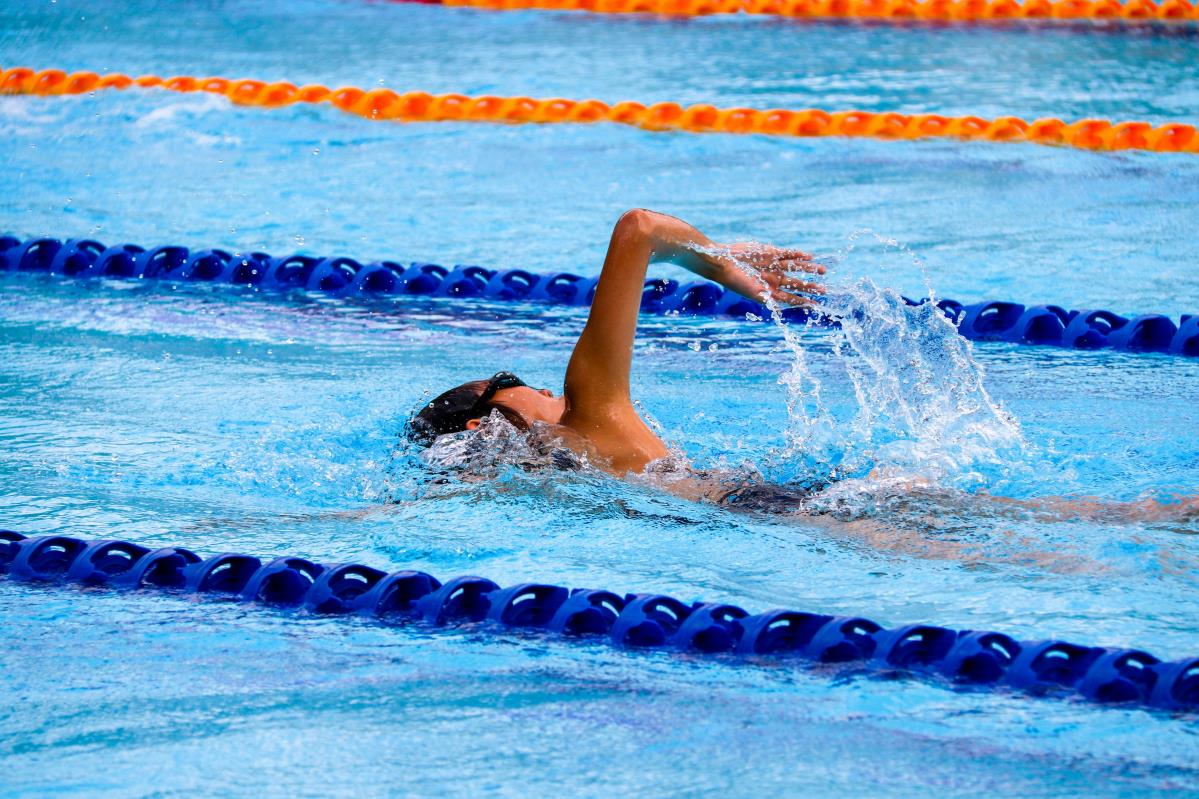
Photo by Marcus Ng on Unsplash
#swim efficiency #faster swims #better swim #swim techniques #swim time #stroke frequency #stroke rate #swim golf #foundational swim #stroke volume #stroke count #meter pool #specific stroke #individual swimmer #helpful drill #traithlontrainingplans #runningtrainingplans #swimmingtrainingplans
his website uses affiliate links which may earn a commission at no additional cost to you. As an Amazon Associate I earn from qualifying purchases. which may cover part of a cup of coffee for me to fuel my training.
